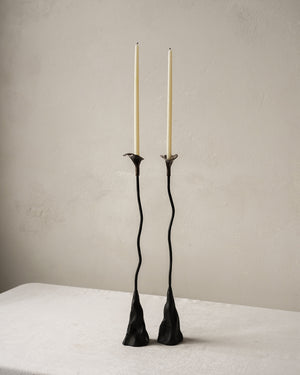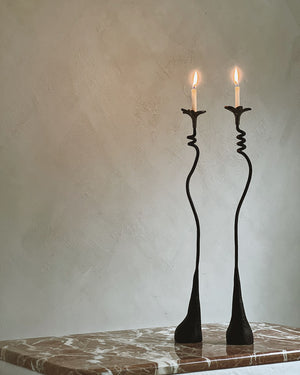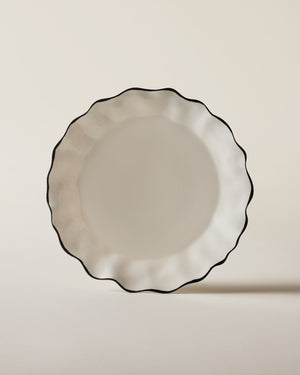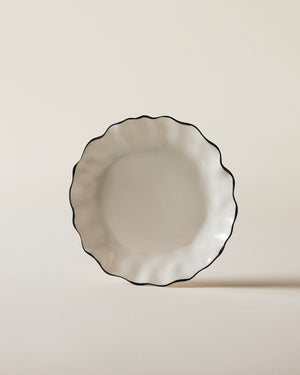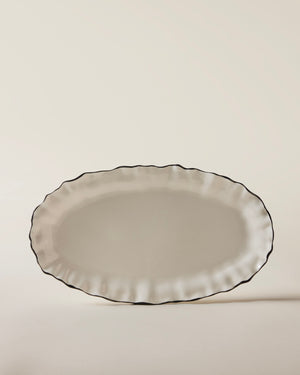ECHOES OF OLYMPUS: ANCIENT GREEK ART WITH GIANFRANCO BRICEÑO

Lately, I've found myself diving deeper into the world of ancient Greece, sparked by a newfound interest in exploring its history and artistic legacy. It all started when I began reading Percy Jackson to my six-year-old daughter. As many parents know, this led to a plethora of questions, such as "Who is Athena?" "Is Hades a bad guy?" and "Why do Satyr's have goat legs?" These innocent inquiries led me down a rabbit hole, delving into myths, legends, and the fascinating pantheon of Greek gods and goddesses. The more I read, the more captivated I became, leading me to explore adult fiction like "Circe" (a gem recommended by a friend), and "Song of Achilles."
As I immerse myself further into this enchanting realm, I kept returning to how contemporary artists, like Gianfranco Briceño, reimagine ancient Greek art in their unique contexts, blending tradition with modern sensibilities to breathe new life into age-old stories and motifs.

|
Medium Moon Jar I Gianfranco Briceño |
Ovo III Gianfranco Briceño |
Ancient Greek art stands as a pinnacle of human achievement, spanning over a millennium of innovation, creativity, and cultural expression. Beginning around the 8th century BCE, Greek art evolved through various periods, each characterized by distinctive styles. The Geometric period (circa 900-700 BCE) marked the emergence of Greek pottery adorned with geometric patterns and stylized figures. This era laid the groundwork for the subsequent Archaic period (circa 700-480 BCE), during which monumental stone sculptures and temple architecture flourished, exhibiting a gradual shift towards more naturalistic forms. The Classical period (480-323 BCE) is often regarded as the zenith of ancient Greek art, characterized by an emphasis on idealized beauty, harmony, and balance.
"Greek art is the expression of the ideal, not the real." - Johann Wolfgang von Goethe



Greek mythology profoundly influenced ancient Greek art, serving as a rich source of inspiration for artists and craftsmen. Myths and legends were depicted in various artistic mediums, including sculpture, pottery, and painting, immortalizing the gods, heroes, and epic tales of Greek folklore. Sculptures of deities like Zeus, Athena, and Apollo adorned temples, while pottery featured scenes from mythological narratives, such as the adventures of Heracles or the Trojan War.
In the wake of Alexander the Great's conquests, Greek art entered the Hellenistic period (323-31 BCE), characterized by an expansion of artistic themes and a heightened emphasis on realism and emotion. Hellenistic art also embraced diversity, drawing inspiration from cultures across the Mediterranean world.
"Myths are public dreams, dreams are private myths." - Joseph Campbell


|
El Deseo Side Table Gianfranco Briceño |
Amphora III Gianfranco Briceño |
The legacy of ancient Greek art endures today, influencing countless generations of artists and serving as a timeless testament to the enduring power of human creativity and imagination. Through its mastery of form, its exploration of myth and meaning, and its enduring aesthetic beauty, ancient Greek art continues to captivate and inspire audiences around the globe.


|
Apollo Lamp 8 Gianfranco Briceño |
Full Moon Perseus & Pegasus Gianfranco Briceño |
I am not sure I would have found myself so enthralled in the world of Ancient Greece if it hadn't been for our work with Gianfranco Briceño - for the last few years, I have been immersed in his work, thinking about how to represent him to our community and Greek Mythology is a huge part of his influence. Briceño's reimagination of ancient Greek art is a testament to his mastery of form and texture, weaving together elements of tradition and innovation to create pieces that resonate with depth and complexity. His exploration of male sexuality and the human body adds another layer of intrigue, inviting viewers to contemplate the timeless themes of desire, vulnerability, and identity. Through Briceño's art, the ancient and the contemporary converge, offering a compelling dialogue that transcends time and tradition, enriching our understanding of the past and the present. As I continue to delve into the wonders of ancient Greece, I am inspired by Briceño's transformative vision, reminding me that art, like history, is a dynamic force that evolves and adapts, shaping our perceptions and illuminating the beauty of the human experience.

